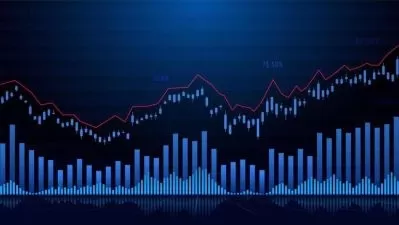About Technical AnalysisLearn More
Technical analysis is the process of examining financial market trends and using the information gathered to make informed decisions for trading financial assets. Technical analysts are an essential part of stock trading and investment banking firms and many financial institutions. Udemy offers several technical analysis courses that can get you started or sharpen your skills if you are an experienced analyst.
Sort by:
Sorting
The newest
Most visited
Course time
Subtitle
Filtering
Courses
Subtitle

Udemy


Wealthy Education
Technical Analysis: The Complete Fibonacci Trading Course 5:44:01
English subtitles
02/27/2023
Subtitle

Udemy


Wealthy Education
Technical Analysis: Fibonacci Trading Masterclass (2023) 6:37:27
English subtitles
02/27/2023
Subtitle

Udemy


Wealthy Education
Technical Analysis: Chart Pattern Trading Mastery 2023 4:03:14
English subtitles
02/27/2023
Subtitle

Udemy


Wealthy Education
Technical Analysis: Chart Pattern Trading Bootcamp (2023) 6:15:31
English subtitles
02/27/2023
Subtitle

Udemy


Wealthy Education
Technical Analysis: Candlestick Trading Mastery (2023) 5:03:02
English subtitles
02/27/2023
Subtitle

Udemy


Wealthy Education
Options Trading: Technical Analysis Trading System (2023) 5:10:44
English subtitles
02/26/2023
Subtitle

Udemy


Wealthy Education
Advanced Technical Analysis Trading Strategies (2023) 5:22:15
English subtitles
02/20/2023
Books
Frequently asked questions about Technical Analysis
Technical analysis involves analyzing statistics like historical price movement, analyzing current market conditions, and identifying potential market changes in order to arrive at trading decisions. You can use it for trading all securities in markets around the world—stocks, options, forex, cryptocurrencies, exchange-traded funds (ETFs), and bonds. Instead of examining larger trends, this type of analysis requires that you dig deep into a company’s financial data to best understand its potential for profit and growth. Learning technical analysis techniques is a way to generate the most up-to-date market information that can help you determine how and when to make your next trade.
There are three principles of technical analysis: the market discounts everything, price moves in trends, and history tends to repeat itself. These principles stem from the Dow Theory, a theory behind technical analysis named after Charles H. Dow, an American journalist who co-founded Dow Jones & Company more than a century ago and invented the Dow Jones Industrial Average. In today’s dynamic market, new and experienced traders can apply these principles to their trading strategies and, ultimately, decide whether they should execute a particular trade. For example, traders can put these principles to good use when analyzing stock charts. Unlike fundamental analysis, which focuses on broader, long-term market trends, technical analysis applies these three principles, which aim to help traders generate short-term market information they can put to use.
Successful stock market trading is all about using technical indicators to help you determine when to profitably buy and when to sell a stock. There are more than 20 technical indicators that traders use for predicting stock price action, direction, and trends. Some examples of these are moving average convergence divergence (MACD), moving average (MA), and the relative strength index (RSI). Traders around the world have used these and other indicators to strategically analyze and trade the stock market for decades. Learning the best indicators, how to confidently apply them, how to build your personal strategy, and how to use various order types is the key to a comprehensive learning experience and a practical use of technical analysis for yourself.
Technical and fundamental analysis are equally important skills to master as you learn about the stock markets and how to make a trade. New and experienced traders can reap great benefits from understanding both. There are some important differences between technical and fundamental analysis. Many professional traders see technical analysis as “The Art of Trading.” Technical analysis focuses on historical price movement, analyzing current market conditions, and identifying potential market changes. Fundamental analysis focuses on the overall state of the economy. It focuses on various factors, including interest rates, employment rate, GDP, international trade, and manufacturing, as well as their relative impact on the value of the national currency they relate to. Fundamental analysis allows you to capture the long-term trend rather than trading short-term and day trading.














